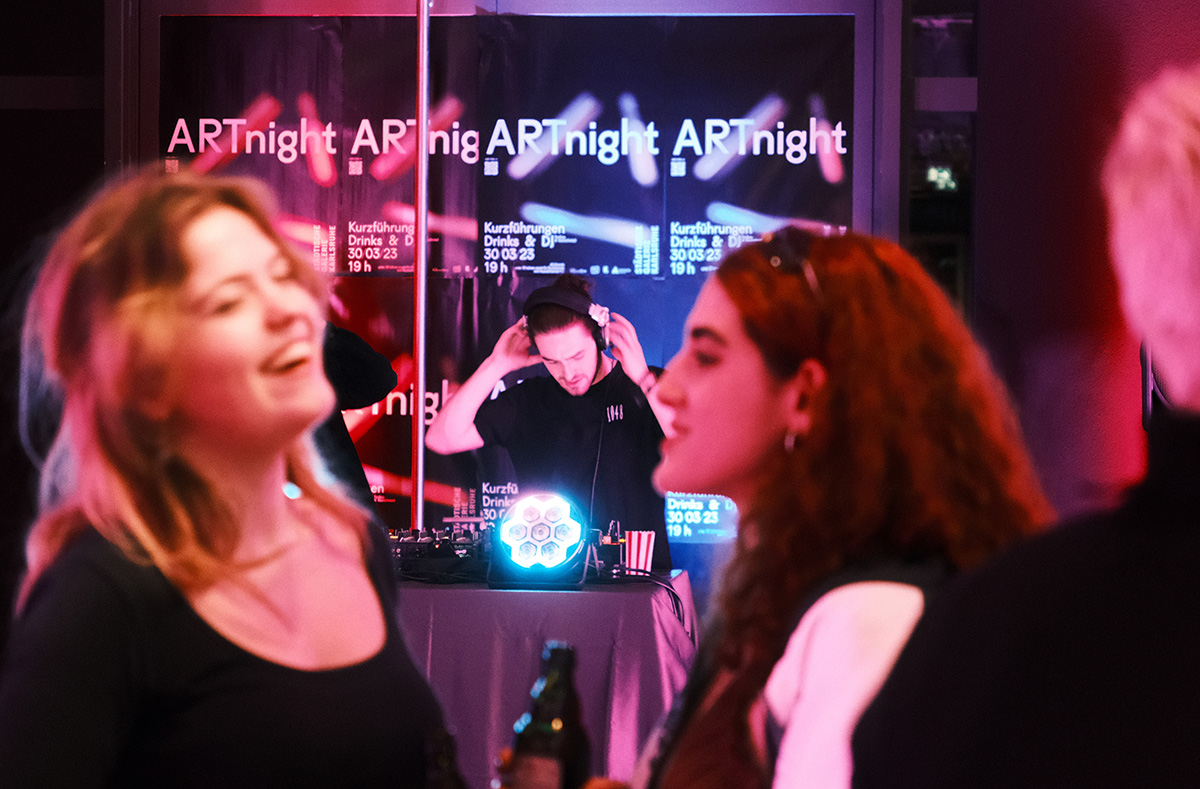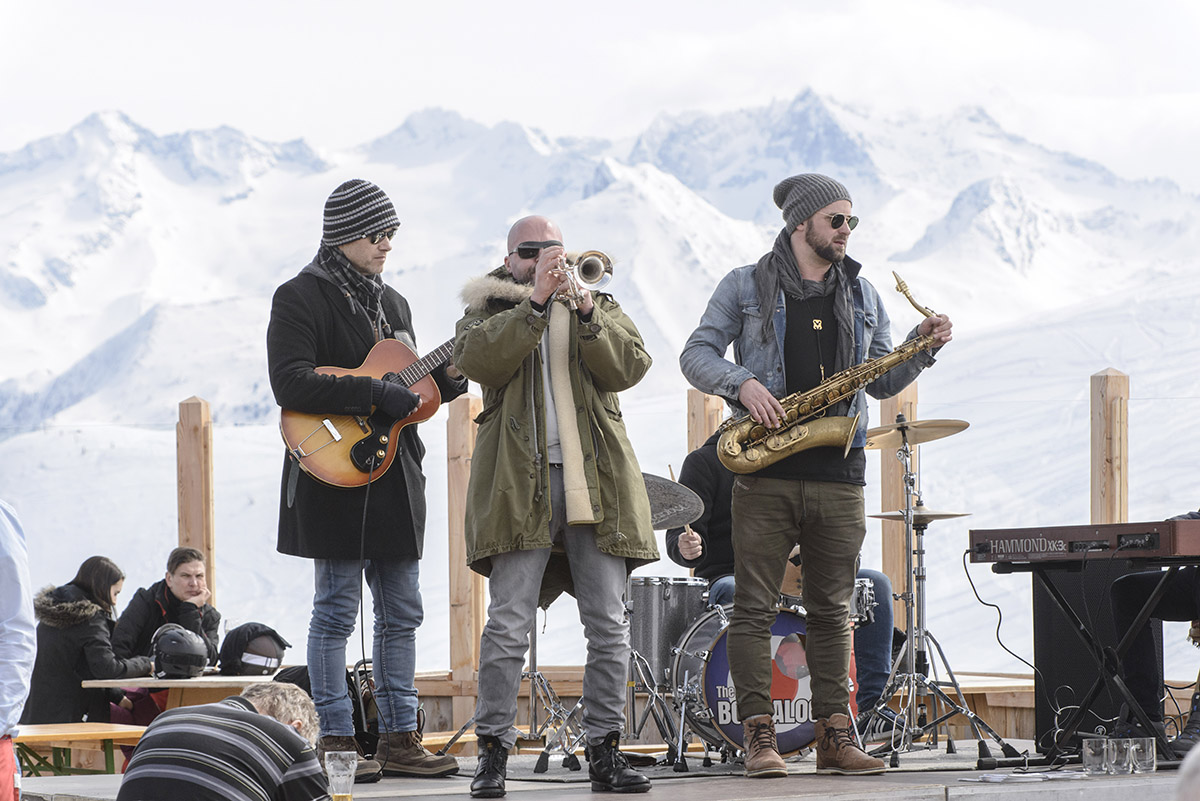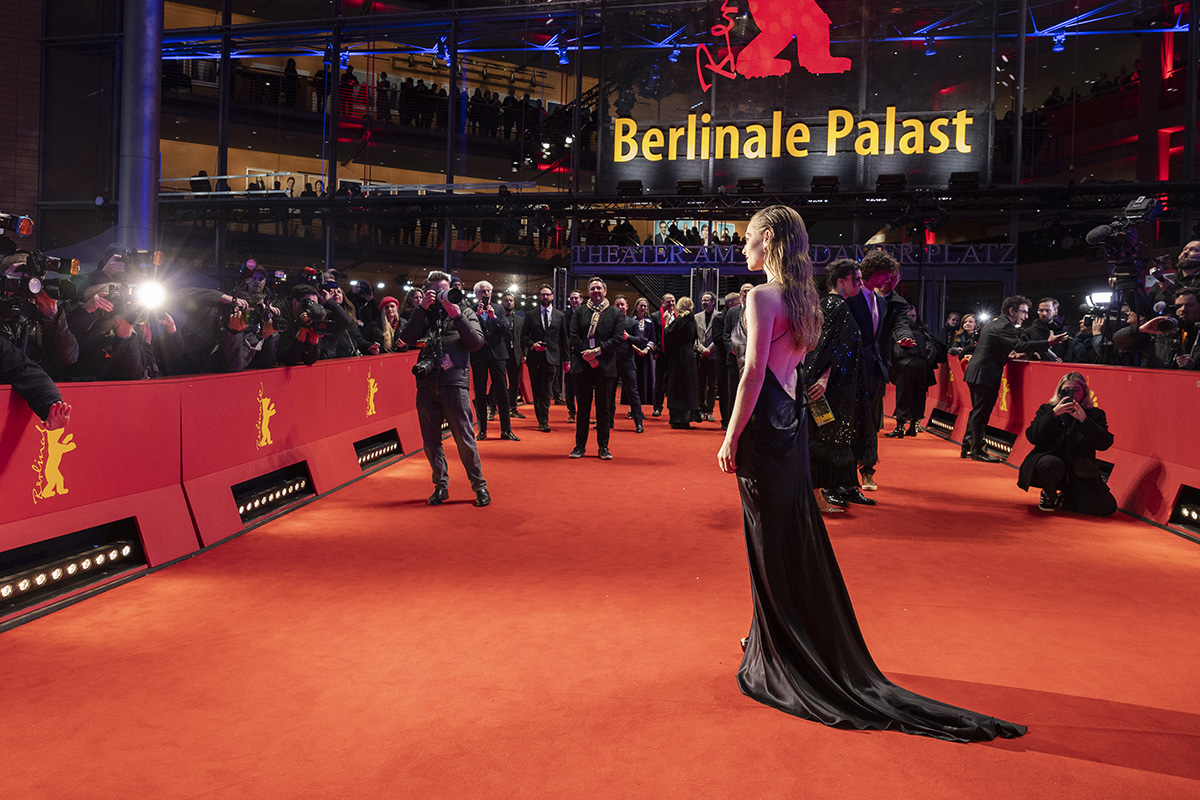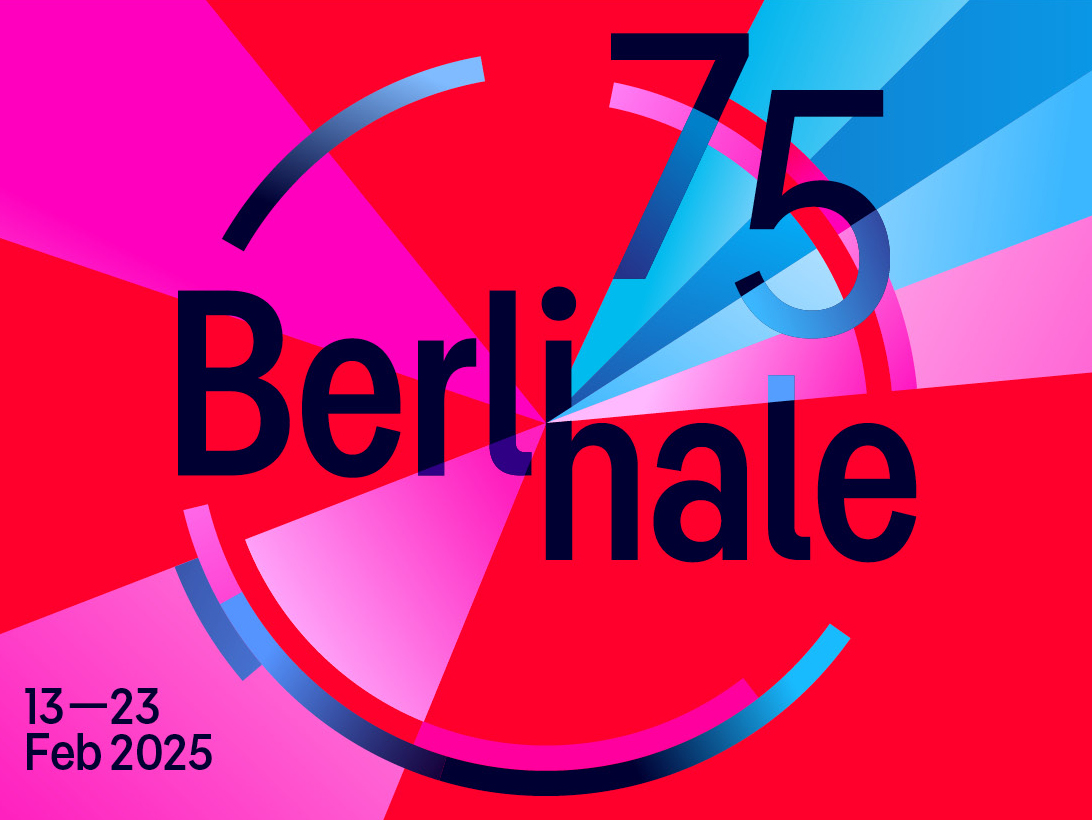Equinox: Ode to paper and textiles
Text: Hannah Krolle
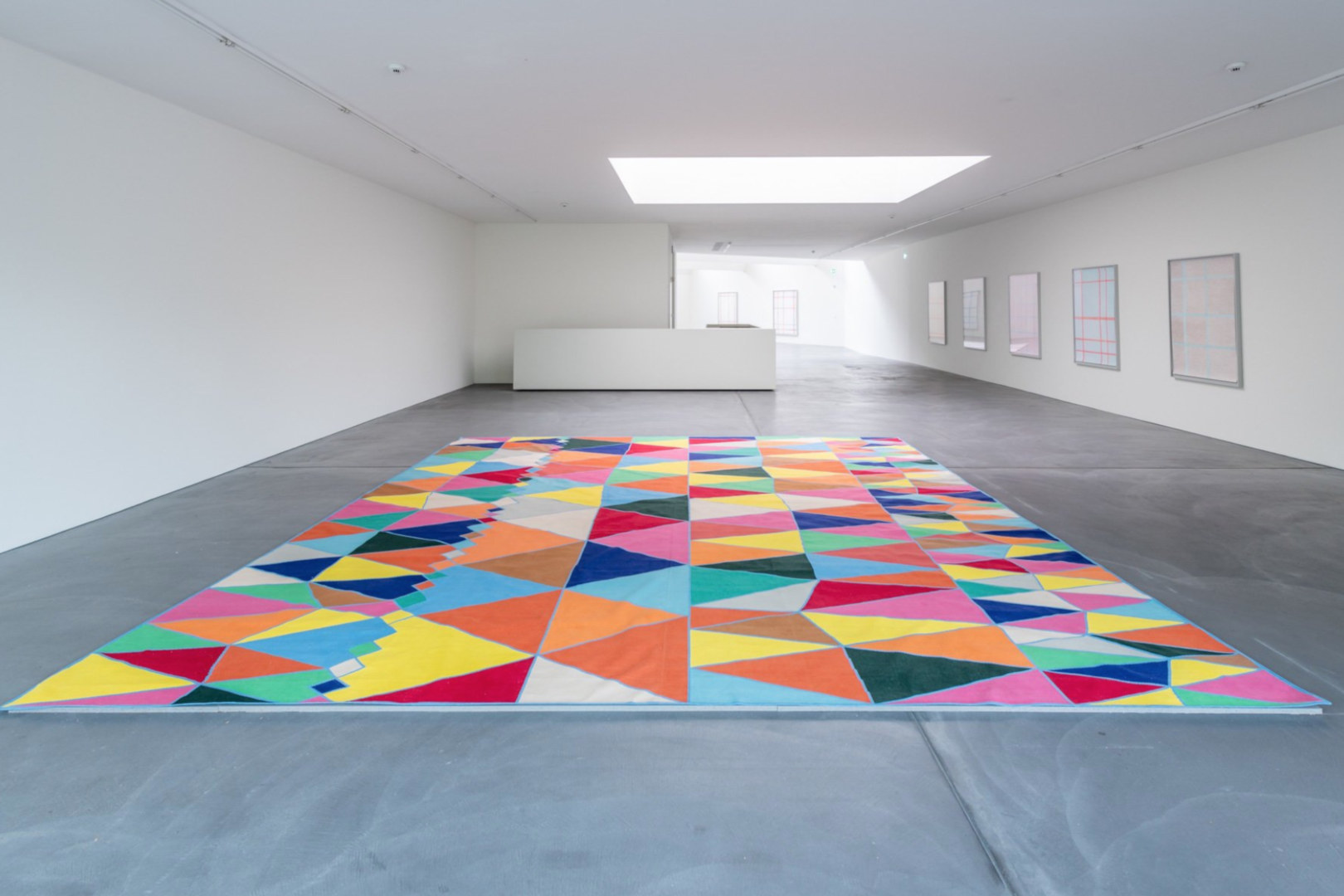
Karim Noureldin, Equinox, installation view at von Bartha, Basel, 11 June To 27 July 2019, courtesy von Bartha, photo by Ben Koechlin.
Karim Noureldin has a passion for delicate materials. By transforming his large-scale drawings into precious carpet works, the Swiss-Egyptian artist helps in preserving the rare, century-old ‘Panza rug technique’ from Western India. From 11 June to 27 July, the unique rug works, floor and wood paintings can be found at ‘von Bartha’ in Basel.
Squares, triangles and lines find harmony in Noureldin’s large drawings. Using both bold shining colours and fine lines on a white background, his works unify the artist’s passion for abstract forms and fine substances. “I have always been attracted to paper. In the last 15 years, colours became more and more important. But the language of my works is still the same,” the artist says.
Raised in the German-speaking part of Switzerland by an Egyptian father and a German mother, the 52-year-old has lived in New York, Rome, London and Cairo before he settled with his family in Lausanne. “When you are young, you need external influence,” he advises. International influences also find expression in his new project, Equinox. In cooperation with Indian carpet makers, Noureldin’s large-scale drawings are transformed into precious, unique textile works. In his interview with Discover Germany, the artist reveals how he found the right technique and his passion for art.

Karim Noureldin, Equinox, installation view at von Bartha, Basel, 11 June to 27 July 2019, courtesy von Bartha, photo by Ben Koechlin.
A journey to Jaipur, West India
“The rugs should keep alive the delicate character of my drawings. That’s what I like about the ‘Panza technique’. But people who still know the century-old manufacturing process were hard to find,” Noureldin says. After almost two years of research, a friend gave him a contact that led the artist to a village 40 minutes from Jaipur: In the lively capital of Rajasthan, a group of people still knows this rare method. “I had to visit them to understand what the process is like,” he remembers. “Whereas weaved rugs are produced on a loom by two men in two days, a ‘Panza rug’ is made a few centimetres above the floor and requires four weeks of work by three men. The material is tighter, more persistent and higher in quality. It even cools in summer when walking barefoot on it. It’s a beautiful materiel,” Noureldin enthuses. Now, after years of cooperation, he is still very close with his co-workers and visits them once a year. “They are equal partners and I don’t use their lower manufacturing costs to make big profits for me. It’s about social awareness.”

Karim Noureldin, artist’s studio, courtesy the artist and von Bartha, photo by Ariel Huber.
Finding his path
Apart from his work as an artist, Noureldin works as a professor of Fine Arts at ECAL University of Art and Design in Lausanne, too. Accompanying students on their way to becoming artists themselves, he remembers his own motivation back when he was younger: “I liked to look at other people’s work in the museum. At the age of 20, it was a conscious decision to study art. As an artist, you work on your own, and I realised: that’s for me.”
Noureldin’s feet remain firmly on the ground despite the fact that his works are in demand by clients around the world. “Art is not a huge talent, there is rather a certain way of working. It’s all about how I structure the day to bring the drawings to life.” Large projects take up to two months and even his smaller works take a couple of weeks. “You let it stand and watch it carefully. You need to find out what is interesting about it. The object you see in the end is just the result of other work you abandon.”

Right Photo: Artist’s portrait, courtesy the artist and von Bartha, photo by Andreas Zimmermann. | Left photo: Karim Noureldin, Play, 2018, pencil on paper, 42 x 30 cm, courtesy von Bartha, Basel.
Titled Equinox, the series of carpet works lend their name to the exhibition at ‘von Bartha’. “’Equinox’ means equal in day and night; in a way that there is a balance, symbolised by vertical and horizontal lines. The titles are playful and spontaneous. They are a code for what we see. You can invent your own interpretation while viewing at them,” the artist continues. Aside from textile works, wooden pieces and floor paintings will be shown as well. “We literally paint a real floor. It’s just for one specific event and stays for around six weeks.”
Noureldin is content with his current situation. “I’m happy how things are. Of course, you wish that work goes on and hope that it will be appreciated. Maybe I would like to continue travelling as well at some point, to South America, Mexico or Asia – to a place I haven’t been to yet.”
Noureldin’s artworks can be found at ‘von Bartha’ in Basel from 11 June to 27 July. The exhibition is free to enter, tickets are not required. Address and opening times can be found at: vonbartha.com/contact More information about the artist can be found at karimnoureldin.net or on Instagram, @karim_noureldin
Subscribe to Our Newsletter
Receive our monthly newsletter by email
